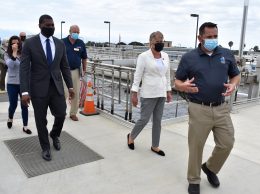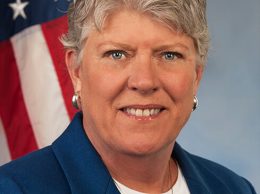Opinion: Time to get serious about infrastructure
By Miranda Patton
As California emerges from 18 months of COVID-19-altered life, commuters, vacationers, and freight operators are once again utilizing our highways, streets, and public transit systems. However, as mobility resumes to pre-pandemic levels, the subpar condition of our state’s infrastructure demands that it is time to commit to priority investment in local and state public transportation projects.
Fortunately, the governor and state legislature agree.
In Gov. Gavin Newsom’s recently signed 2021-22 state budget, billions of dollars have been allocated to several “transportation funding buckets,” indicating a strong commitment to public infrastructure. This funding augments existing gas tax revenues (which were diminished this past year) for our current stock of state and local projects, and carries the added benefit of spurring the economy through job creation at a time when we need it most.

The governor’s 2021-22 Budget Summary states that approximately 11,000 jobs are created for every billion dollars spent on transportation infrastructure, an appropriate data point as we lean into Labor Day, paying tribute to the contributions and triumphs of American workers.
The Biden administration has offered up a very impressive American Jobs Plan that also includes significant investments in public infrastructure. I am pleased to see that this proposal has moved through the House and now has a speaker-imposed deadline of Sept. 27 to take the next step.
Congress is also considering legislation to reauthorize and expand several federal surface transportation programs. The policy and funding decisions currently before our representatives in Washington, D.C. provide California with a historic opportunity to not only address years of deferred maintenance but to modernize our physical infrastructure systems, thus improving road and bridge safety, supporting resiliency, and delivering a strong economic recovery.
And the state of California needs to be ready to maximize this anticipated federal investment by ramping up project workforces quickly as the funds come in.
This will require use of all available resources — both in the public and private sectors. Fully utilizing the private sector enables public agencies to benefit from greater innovation by gaining access to the broad experience and specialized expertise available in the open marketplace for design professional services. Private consultants, working alongside public employees, provide public agencies with added flexibility and faster project delivery by matching project needs with the experienced design professionals exactly right for the job.
Contracting with private firms avoids the long-term unfunded pension and medical care liabilities associated with the extensive use of public employees and avoids having to carry out the difficult, litigious task of laying off public employees when a public agency’s design needs and infrastructure funding declines.
In 2019, a full 10 months before most of California shut down, the American Society of Civil Engineers issued its widely recognized annual infrastructure report card. California was given a barely passing grade: a C-. Broken down, California’s rail system obtained a C, transit a C-, and our roads a D.
With the aforementioned state and federal investments, there is opportunity to raise the grade. But it won’t happen overnight. And it will demand that our state leaders take full advantage of the state and federal funding coming down the pipeline by intentionally mobilizing a robust workforce to deliver the projects effectively and efficiently.
California’s private design professionals stand ready to meet the challenge.
• Miranda Patton is vice president for business development at MNS Engineers in Westlake Village and president of the American Council of Engineering Companies, California.











